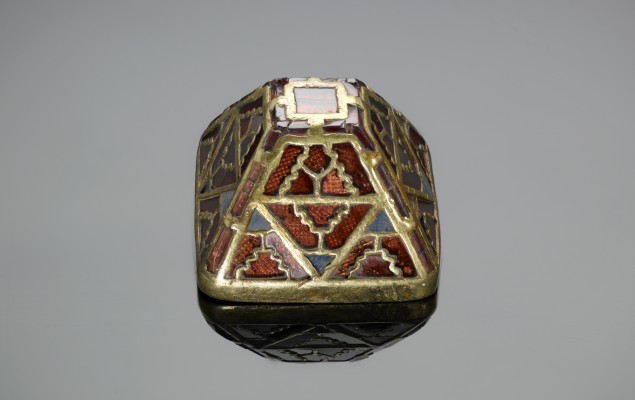
[This blog post was part of our blog tour and was originally posted over on Bart’s Bookshelf.]
We both LOVE history – love it so much we both studied it at university – so we knew right from the beginning that we wanted to set the ‘fairy tale’ bit of The Witch’s Kiss in the past. But, there’s a lot of past to choose from…
After a bit of thought, we decided that we didn’t want to go with a generic, ‘medieval’ sword and sorcery setting. Yet we knew that the story of Jack, and how he ended up cursed, needed to be set far enough in the past to have that slightly other-worldly, fairy tale feel. Plus, why have a Sleeping Beauty character that only sleeps for a hundred years, when you can have him sleeping for centuries? In the end we picked late 5th / early 6th century Anglo-Saxon England as our setting for the historic sections. And although The Witch’s Kiss is fantasy, we wanted to make sure we described Queen Edith’s court, and the village were Jack grows up, as authentically as possible.
So the first thing we did was buy a whole load of books – yay!!

We read history books – Max Adams is BRILLIANT, by the way: his books are as gripping as any novel – and some of the surviving literature from (very approximately) the same time period. The nerdier of the two of us (naming no names) now has three different versions of Beowulf, and really recommends the Seamus Heaney translation.
There are also, of course, a lot of amazing resources on-line and out there in the real world. To get an idea of what our Anglo-Saxon characters might wear and how they might live, we looked at websites like Tha Engliscan Gesithas and Anglelcynn Re-Enactment Society. We also visited the wonderful Anglo-Saxon section in the British Museum (where we spotted Jack’s ‘seax’) and we were lucky enough to see the Staffordshire Hoard on display at Lichfield Cathedral (the design of the handle of The King of Heart’s sword is inspired by an item in the hoard).


And then there’s the language. Obviously, we couldn’t write the Anglo-Saxon sections in actual Old English. But when faced with a choice of words, we did try to use ones derived from Old English (rather than Latin or French, for example) wherever possible. And we carefully avoided anything obviously anachronistic. Personally, it makes us want to tear our eyes out when a pre-twentieth century book character goes around saying stuff like “What’s up? You okay?”
As well as choosing the right kind of modern English, Merry, our hero, has to cast a few spells in Old English. So back when we were writing the first draft (way before agents and publishing deals) we had a go at constructing some appropriately spell-like Old English sentences. Cue more books:

Merry has some difficulty dealing with Old English when under pressure:
Merry gasped as whatever had been pinning her in place – terror, or magic – vanished.
‘Damn –’
She dropped her phone and fumbled for the parchment. There was a new line of writing, an instruction.
The monster is intent on sin. Name his name to draw him in.
There was a single sentence underneath:
Æstand, heortena cyning
Was she supposed to translate it? Right now?
‘Seriously?’ Merry yelled at the manuscript. But Jack was getting further away. Merry swore again, and ran after him.
Luckily our publishers got our attempts at old English professionally checked before going to press, but we were pretty pleased to find that we weren’t too far off.
As you can (hopefully) tell, we had a huge amount of fun researching the historical aspects of The Witch’s Kiss. Almost too much fun. So our message to any other writers out there thinking of dipping a toe into historical research is: go for it, but remember you also have to write the book. J